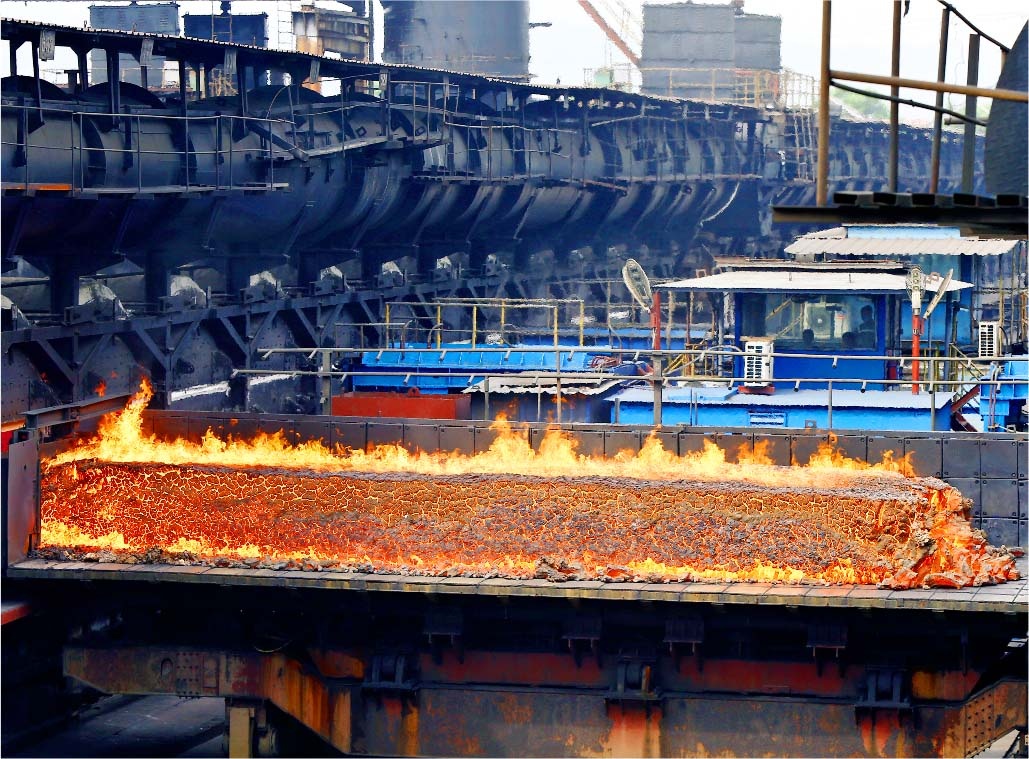Firms adapt to higher power costs
The average retail power price surged 4.8 per cent on October 11, bringing the total price hike over the past two years to more than 12 per cent.
Higher power prices, one of the key input costs for various manufacturing sectors, are expected to badly affect production firms, particularly large energy consumers such as cement, garment, and steel firms.
Power costs account for a remarkable proportion of the production costs across diverse sectors. For instance, they constitute 9-10 per cent of the total production costs of steel, 14-15 per cent for cement, and 9 per cent in the chemical industry. The fresh price hike will inevitably raise companies' monthly expenses.
 |
| Production firms are finding suitable ways to adapt to higher power prices. Photo: baodautu.vn |
The leadership of Vicem Tam Diep Cement JSC noted, “The 4.8 per cent power price hike will raise our company's costs by an additional $125,000 from now until the end of the year. For the entire year, this figure could approximate $583,000.”
Ha Quang Hien, chief of staff at state conglomerate Vietnam Cement Industry Corporation (Vicem), revealed that the power price hike was anticipated because the power sector’s input costs have been on a sharp rise.
“We had already made provisions for potential power price hikes,” Hien said.
| Higher production costs reduce product competitiveness, forcing companies to find ways to cut costs, especially by reducing power consumption |
The rise in electricity prices has forced production firms to reassess their processes, enhance efficiency in power usage, and minimise input costs as much as possible.
A source from the Vietnam Cement Association (VNCA) said that the cement industry consumes approximately 9.5 billion kWh of electricity annually.
“Power prices should follow market trends, but we expect local power authority Vietnam Electricity (EVN) to ensure a stable and uninterrupted power supply to cement plants. If the kilns have to stop, the financial losses for businesses would be substantial,” said Luong Duc Long, general secretary of VNCA.
Some cement companies in the northern province of Ha Nam have reported that unstable power supplies have significantly affected their production plans.
To adapt to the rising input costs of production, Vicem Tam Diep is implementing waste heat recovery power generation technology from its cement production lines to supply part of its power consumption.
They are also applying co-processing technology in kilns, using waste as an alternative fuel in a bid to meet their business targets for the year.
The cement, chemicals, steel, and paper sectors are most affected by rising power costs.
Nguyen Duc Thang, general director of Dap Cau Garment Company, noted that the rise in power prices has caused a ripple effect, increasing other costs, leading to a 10 per cent rise in production costs since the outset of the year.
Higher production costs reduce product competitiveness, forcing the company to find ways to cut costs, especially by reducing power consumption.
Their priority is to reorganise production schedules, reducing peak-hour production and improving efficiency during off-peak hours when power rates are lower.
Additionally, the company is considering installing rooftop solar power systems, which would ensure a stable power supply and meet the green standards required by customers.
Last year, despite power prices hikes in May and in November, the local cement price did not rise, as companies opted to improve technology and optimise production costs instead.
The Vietnam Institute for Economic and Policy Research estimates that the manufacturing sector, especially the fast-moving consumer goods industry, will be significantly impacted by higher costs if the power price goes up in the final quarter of the year, leading to increased production and selling prices.
The power price is expected to rise further in 2025 as current rates do not cover production costs.
When power prices go up, companies across all manufacturing sectors will need to continue restructuring their expenses and optimising production to save costs. Additionally, they must accelerate the shift to renewable energy sources to reduce reliance on traditional energy, thus improving the competitiveness of their products.
 | Cost juggling continues for retailers Retailers in Vietnam are still determined to expand their operations, at a time when prominent groups reorganise their operations to cut costs. |
 | Overhaul demanded to slow cost burdens Businesses are seeking support to help them prosper as they continue to deal with regulation complexities, among other issues. |
 | Cost efficiencies now a must in construction Social housing development and boosting public investment disbursement are considered comprehensive solutions for the construction materials industry. |
What the stars mean:
★ Poor ★ ★ Promising ★★★ Good ★★★★ Very good ★★★★★ Exceptional
Related Contents
Latest News
More News
- Businesses ramp up production as year-end orders surge (December 30, 2025 | 10:05)
- Vietjet chairwoman awarded Labour Hero title (December 29, 2025 | 13:06)
- How to unlock ESG value through green innovation (December 29, 2025 | 10:03)
- AI reshapes media and advertising industry (December 29, 2025 | 08:33)
- FPT and GELEX sign deal to develop blockchain tech for global markets (December 29, 2025 | 08:29)
- Vietnam’s GDP forecast to grow by 9 per cent in 2026 (December 29, 2025 | 08:29)
- Women entrepreneurs are key to Vietnam’s economic growth (December 29, 2025 | 08:00)
- Vietnam's top 500 value-creating enterprises announced (December 27, 2025 | 08:00)
- The PAN Group shaping a better future with ESG strategy (December 26, 2025 | 09:00)
- Masan Consumer officially lists on HSX, marking the next phase of value creation (December 25, 2025 | 13:20)

 Tag:
Tag:



























 Mobile Version
Mobile Version